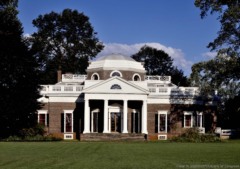The Hopewell Culture is an ancient Native American cultural phenomenon that thrived in the Ohio region of the United States. This culture, which emerged between 100 BCE and 500 CE, is known for its distinctive earthworks, elaborate burial mounds, and extensive trade networks that spanned across much of eastern North America. The Hopewell people are named after the owner of a farm near Chillicothe, Ohio, where the first Hopewell site was excavated in the 19th century.
Hopewell Culture in Ohio
One of the most remarkable features of the Hopewell Culture is its earthen enclosures and geometric earthworks. These earthworks, built in the shapes of circles, squares, and octagons, often served as ceremonial and social gathering places. The Great Circle and Octagon Earthworks in Newark, Ohio, are some of the most famous examples.
The Great Circle, with a diameter of over 1,200 feet, enclosed a large space that may have been used for rituals and communal activities. The Octagon, with its precisely aligned walls and gateway, is thought to have had astronomical significance. The Hopewell people are also renowned for their elaborate burial practices.
They constructed burial mounds, often in the shape of conical mounds, which contained rich grave goods, including exotic materials like copper, mica, shells, and rare artifacts. The meticulous construction of these mounds and the items buried within them suggest complex ceremonial and religious practices. Some mounds, like those at Mound City in Ohio, contained burial chambers with multiple individuals.
Trade was a significant aspect of Hopewell culture. Artifacts found at Hopewell sites, such as obsidian from the Rocky Mountains and marine shells from the Gulf of Mexico, provide evidence of extensive and sophisticated trade networks. The Hopewell culture’s ability to access these distant resources highlights their advanced societal organization and the importance of their ceremonies.
The Hopewell Culture is particularly interesting because it was not a single, unified culture but rather a shared set of practices and beliefs that spanned different tribal groups and regions. These groups participated in the Hopewell cultural phenomenon, leading to an exchange of ideas and practices.
The Hopewell Culture eventually began to decline around 500 CE, although the reasons for its decline are still debated among archaeologists. Changes in climate, social structures, and interactions with other cultures might have played a role. Despite its eventual decline, the legacy of the Hopewell Culture remains in the remarkable earthworks and artifacts they left behind, offering valuable insights into the prehistory of the Ohio region and eastern North America.
Hopewell Ceremonial Earthworks
The Hopewell Ceremonial Earthworks, a collection of eight massive earthen enclosure complexes, stands as a testament to the Hopewell culture, an Indigenous tradition that flourished in the Ohio River valley between 2,000 and 1,600 years ago. These earthworks, characterized by intricate geometric patterns and meticulously sculpted hilltops, are remarkable in their precision, scale, and complexity.
They encompass vast plazas enclosed by enormous squares, circles, and octagons, all constructed with consistent attention to form and dimension. Additionally, these earthworks are aligned with the cycles of the sun and the intricate cycles of the moon, highlighting their ceremonial significance, and they have been a UNESCO World Heritage Site since 2023.
These ceremonial centers served as focal points for the Hopewell culture, developed by groups living in a non-hierarchical manner and sustaining their way of life through a combination of foraging and farming. These earthworks had a far-reaching influence across the continent, serving as hubs for interactions and trade. They yielded finely crafted ritual objects made from exotic raw materials acquired from distant regions.
Hopewell Culture National Historical Park, located in Ross County, Ohio, encompasses four distinct sites that are open to the public, including the former Mound City Group National Monument. These sites are rich in archaeological resources representing the Hopewell culture, which thrived from around 200 BC to AD 500. The Ohio River Valley was a central area for the Hopewell culture, characterized by the construction of earthwork enclosures and mounds with diverse shapes.
These earthworks often take the form of squares, circles, and other geometric designs and were constructed on an awe-inspiring scale, with earthen walls reaching heights of up to 12 feet and outlining geometric figures that stretched over 1,000 feet in diameter. Associated with these geometric earthworks are conical and loaf-shaped earthen mounds that can reach heights of up to 30 feet.
The people who created these impressive structures demonstrated a profound understanding of local soils, carefully combining different types to ensure stability. Constructing these earthworks required the organized labor of thousands of hours, with people carrying earth in handwoven baskets.
Mound City, one of the park’s sites, features 23 earthen mounds that were constructed by the Hopewell culture. Each of these mounds covered a charnel house where the remains of the deceased were cremated and the structure burned. The Hopewell people also included various artifacts, such as copper figures, mica, projectile points, shells, and pipes, in these mounds.
European Americans first mapped the site in the 1840s, and the archaeologists Ephraim George Squier and Edwin Hamilton Davis conducted the initial excavations, amassing a significant collection of artifacts now preserved at the British Museum. Unfortunately, during World War I, much of the site was destroyed as the United States Army built a military training base, Camp Sherman, on the land.
The Ohio Historical Society later conducted archaeological work at the site from 1920 to 1922 and engaged in the reconstruction of the mounds. In 1923, the Department of the Interior designated the Mound City Group as a national monument, with federal oversight.







